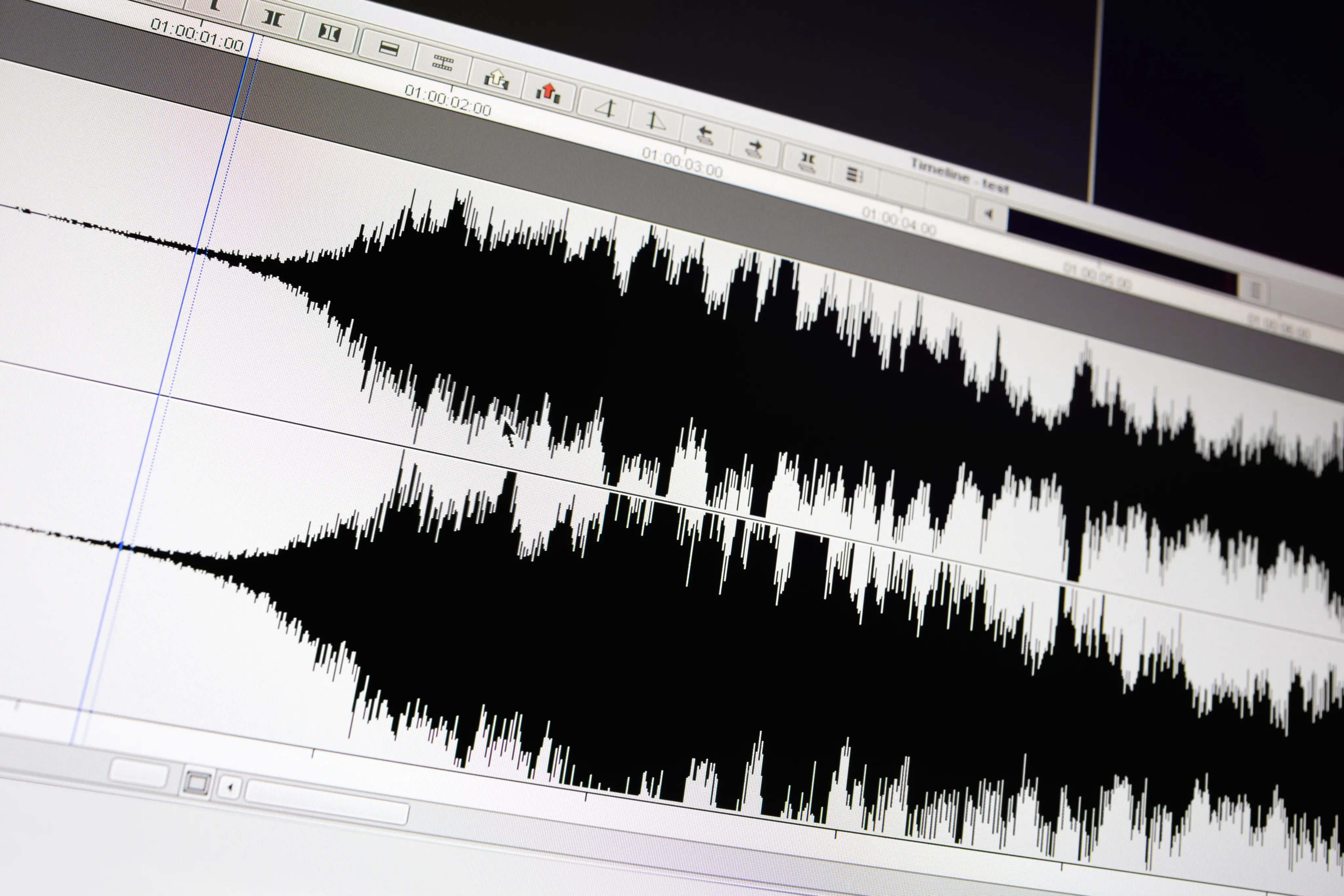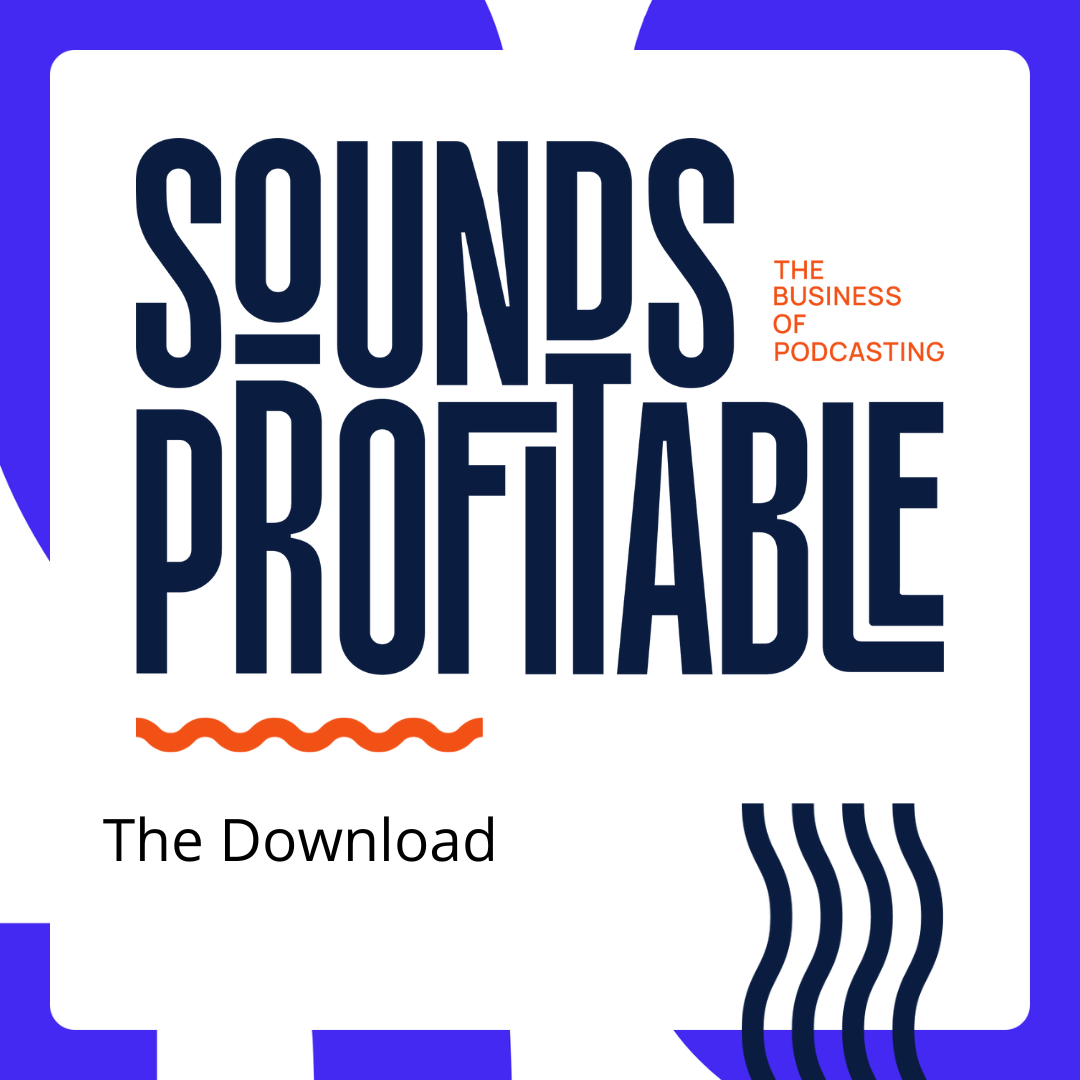Manuela: This is The Download from Sounds Profitable, the most important news from this week and why it matters to people in the business of podcasting. I’m Manuela Bedoya.
Shreya: And I’m Shreya Sharma.This week: The App Tracking Transparency Recession, Streamers struggle with frequency capping, Bumper calculates listen time, and IPG Equity Upfront Spotlights Lack of Diverse Adspend.
Manuela: The Download is brought to you by Magellan AI. Track the trends in spend, ad load, podcasts on YouTube, and more with Magellan AI’s advertising benchmark report for Q4, available now.
Shreya: Let’s get started.
The App Tracking Transparency recession
Manuela: While not hot off the presses, an early January article from Eric Benjamin Seufert discussing the effects of Apple’s App Tracking Transparency has come across The Download’s desk. As with most things in advertising, there’s nuance in the numbers.
Quick refresher for those who haven’t seen the letters ATT dozens of times: App Tracking Transparency was a privacy policy introduced to iOS in 2021 that turns most forms of mobile data tracking into an opt-in service. As a result, a significant portion of iOS users have digitally disappeared for advertisers. An upset to the status quo, for sure, but the overall numbers provided by Seufert show the digital advertising market is not in a cyclical downturn.
That said, social media platforms and other industries most likely to be affected by ATT have experienced a significant downturn due to a combination of both ATT-influenced changes and changing consumer preferences.
Which is to say, not macroeconomic factors. A market-wide downturn, as well as more stress on those companies most affected by ATT, would primarily come from an actual 2023 recession. Overall, digital advertising has been working as intended. Consumers are consuming.
Seufert points to a Bureau of Labor Statistics graph tracking US employment in December of 2022. According to these, unemployment is the lowest it has been since August 1969. From Seufert’s piece:
“But one might assume that the economy has utterly imploded from reading the Q3 earnings call transcripts of various social media platforms. Alphabet, Meta, and Snap, in particular, cited macroeconomic weakness, headwinds, uncertainty, challenges, etc. in their Q3 earnings calls.”
In the weeks since Seufert’s article, the overall numbers are trending to agree. The Download has recently mentioned podcast ad spend has remained up while others decline, but the same holds true for other areas. Last week a piece by Ethan Cramer-Flood for Insider Intelligence reports mobile app install ad spending increased 24.8% in 2022, on track to a market growth of 12% this year.
Meanwhile, still on Insider Intelligence, Daniel Konstantinovic reports that while market concerns aren’t gone, ad-cost inflation has slowed. 84% of ad executives told Insider Intelligence they’re not lowering budgets for 2023. From Konstantinovic:
“But now, the industry is adjusting to a new normal. With inflation steadily falling and the cost per ad decreasing, some of the advertising spending that was staunched in the second half of last year may return.”
The future may be uncertain, but for the wider advertising economy, podcasting included, things tend to be stable or trending upward. And, it bears repeating, podcasting has never benefited from mobile device IDs. From this industry’s perspective, at least, ATT has had little to no impact. It feels fitting to end with this quote from Seufert’s article:
“While one might materialize, the belief that an advertising recession is currently and comprehensively depressing advertising spend is difficult to support with analytical rigor.”
Streaming advertisers continue to struggle with frequency caps.
Shreya: If you’ve used a video streaming service with advertisements, you’re likely intimately aware of the industry’s issue with frequency caps. Last week’s Future of TV Briefing from Digiday’s Tim Peterson zooms in on this particular issue with the section Capping Out.
Streaming advertisers are in a bind. Some viewers are getting underexposed to ads, while others are overexposed. Problems that will only exacerbate as digital video streaming continues on its overtake of traditional television. According to a recent eMarketer graph, US adults only averaged five minutes less digital video time than television last year, and are projected to overtake TV’s declining numbers for the first time this year.
Of course, addressing the frequency issues isn’t as easy as it sounds. A myriad of reasons exist, from lack of ability to track exposures across multiple streaming platforms, to multiple DSPs buying from the same pool.
Even when the solution exists, sometimes it comes at a price. Peterson reports some streamers are charging more in exchange for placing stricter frequency caps. An anonymous ad agency executive told Digiday:
“Some will endeavor to charge more for more restrictive frequency caps, which could be prohibitive or incentivize lower spend from partners. But more and more, they’re willing to waive those fees. And hopefully that will be the case going forward as I think these lower frequency caps are the expectation, not the exception anymore.”
This particular piece made the cut this week for two reasons.
- It’s a good overview of the situation as it currently stands for streamers.
- It serves as a reminder that issues we experience in the business of podcasting are not always unique to podcasting, nor is the onus on our industry to magically fix the problem ourselves.
Something to keep in mind before the next headline about ‘podcasting’s frequency capping problem’ rolls around.
Bumper Calculates Listen Time
Manuela: Back in January, Bumper’s Jonas Woost posted a proposal for the podcasting industry to move past the download and evolve similarly to how YouTube has evolved past the view. While not abandoned by any means, video view counts have taken a back seat to watch time metrics in recent years. Bumper’s future aims for podcasters to have their own metric with listen time. This week Dan Misener has followed up Jonas’ post by calculating listen time on an episode of his podcast Grownups Read Things They Wrote as Kids. From the article::
“Inconveniently, many podcast apps simply do not report Listen Time, or equivalent metrics. At Bumper, we try not to let perfect be the enemy of good. So to calculate Listen Time for podcast episodes, we do the best we can with what we have, then use reasonable estimates for the rest.”
While not a herculean effort, Misener’s step-by-step guide on how to pull your own numbers from Apple and Spotify require some arithmetic and a teeny bit of opening your browser’s code to find a specific JSON file. For anyone finding themselves interested for business reasons, or perhaps for a geeky weekend math project, the article also provides a Google Sheets template to start from.
In addition to the guide for Apple and Spotify, Misener tosses in a few extra-credit opportunities into the assignment with suggestions for also implementing YouTube watch time, Google Podcasts ‘minutes played’, and ‘hours listened’ data from applicable embedded web players.
As Misener says in his closing bullet points, the download isn’t going anywhere. Bumper’s goal is to aim for a future where downloads are not the only metric considered. Now to see if various platforms and apps share a similar outlook and make steps to provide Listen Time. We’ll keep our ears open.
IPG Equity Upfront Spotlights Lack of Diverse Adspend
Shreya: This month the IPG Mediabrands Equity Upfront event in New York brought together around thirty publishers to focus on media with owners of diverse backgrounds. Ryan Barwick of Marketing Brew was in attendance to cover the event. From his article:
“Nearly two years after many in the advertising industry revealed plans to invest more money in Black-owned media, those publishers said they are still educating media buyers and advertisers about what they have to offer.”
According to Magna US president Dani Benowitz, IPG Mediabrands increased its ad spend in Black-owned media 61% between 2021 and 2022, as well as a 7% increase in Hispanic-owned media and 32% in AAPI-owned media.
Still, money isn’t flowing in as fast as old promises implied. According to Magna’s estimates from Nielsen data, only 2% of total ad spend goes to Black-owned media, despite 14% of the US population being Black.
This week Marketing Brew’s Katie Hicks writes on similar pay inequity in influencer marketing:
“In December 2021, influencer education platform The Influencer League and PR agency MSL US released a study that found that Black creators, on average, made 35% less than white creators. While the issue has gotten more attention in the last year, Brittany Bright, founder of The Influencer League, told us that efforts to address it are still in their early stages.”
Cavel Khan, CCO of Group Black, a collective of publishers and creators focused on bringing more ad dollars to Black-owned media, ends Barwick’s piece explaining events like IPG’s Equity Upfront put a stop to excuses for industries not prioritizing minority-owned media companies. From Khan:
“Everyone who’s going to present to you is creating value…You’re going to have an overwhelming amount of evidence when you sit here for three days. You have to act.”
Shreya: Finally, it’s time for our semi-regular roundup of articles we’re calling Quick Hits. These are articles that didn’t quite make the cut for today’s episode, but are still worth including in your weekend reading. This week:
If you work for a podcast network, we’ve got a webinar signup link you’ll want to check out. Clear your calendar for Wednesday, March 1st, when Bryan Barletta takes to the virtual stage with Frequency CEO Pete Jimison to talk about Frequency’s next generation of podcast workflow tools. Catch a live demo and hear directly from Pete about automating vetting processes that can help you gain speed, efficiencies, and scale your network. Visit the link in our show notes to register. Please note, registration requests will only be accepted for those that work at podcast networks.
ARN’s iHeart and Magellan AI have released the Australian Top 15 Podcast Advertisers for Q4 2022. From Amazon to Aldi, the list covers a wide spectrum of businesses.
The Digiday Media Awards deadline for submissions is approaching, with the regular deadline being March 9th and the last-chance deadline on April 20th. This year will be the first edition of the awards to include Top Podcast.
IAB Tech Lab’s First Data Clean Room Standard is Open for Public Comment by Allison Schiff. A solid explanation of the standard and what impacts it could have.
Manuela: And that was The Download, brought to you by Sounds Profitable! Today’s episode was built using Spooler and hosted on ART19. Find out more at Spooler.fm and Art19.com
I know we went through today’s stories fast, so be sure to check out the links to every article mentioned, right in your podcast listening app, or on SoundsProfitable.com. And thank you for sticking with us as we bring you the top stories you might have missed from the past week. I’m Manuela Bedoya.
Shreya : And I’m Shreya Sharma. Our producers are Bryan Barletta, Gavin Gaddis, and Tom Webster. Our editors are Reece Carman and Ron Tendick. Special thanks to Art19 for hosting The Download. And thanks to you for joining us.


 "
"


